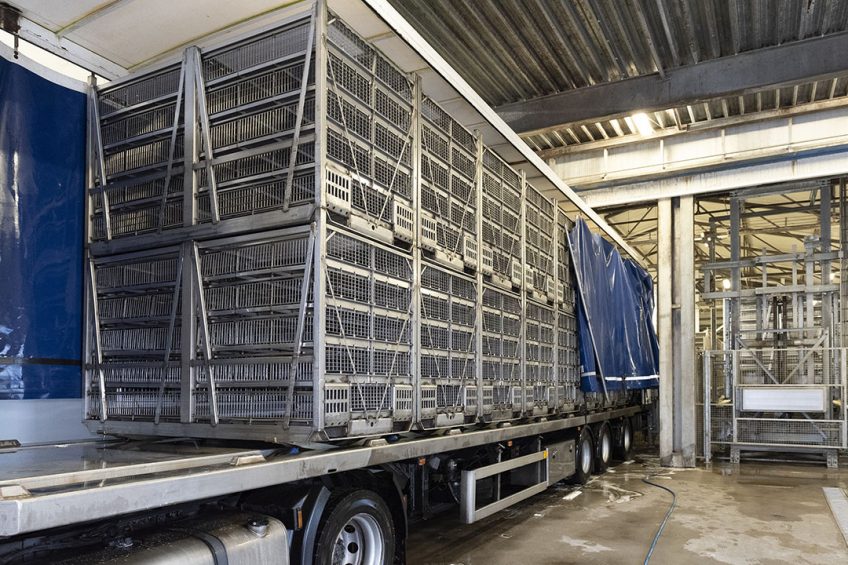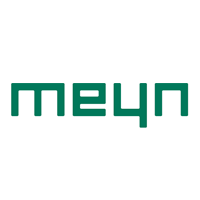Combatting labour shortages in the poultry industry

With the current labour shortage only expected to increase, Meyn is dedicated to helping customers remain effective, competitive and profitable. To get the job done the company has developed an integrated set of measures that address these challenges through a concept called, ‘Smart Labor’ in which 2 key issues are targeted; labour reduction and improving labour.
Working in the poultry industry has always been a challenge, it’s work generally categorised as a 3D job: Dirty, Demanding and Dangerous. In the past, mostly poorly educated immigrants worked in processing plants as they had fewer options for better jobs.
Now, however, the unemployment rate in, for example, the USA, is dropping and the supply of immigrant workers decreasing because of economic and political factors. At the same time, the education level of new immigrants is increasing, making them less inclined to work in the poultry industry. In the USA, the 3D-character of the jobs leads to high turnover (about 58% of workers quit their job within 90 days, another 28% quit between 90 days and 180 days, and only 14% stay longer than 180 days).
Under these circumstances, employers will likely not be inclined to invest time and money in training – and employees may not actually be interested in receiving training. Absenteeism and high turnover are estimated to add 4% to processing costs. And at the same time the poultry business is growing rapidly due to increasing worldwide demand for protein and the success of poultry as a protein source.
‘Smart labor’: Labour reduction
Throughout the company’s history, Meyn has helped customers process poultry in a more economical way through:
- Increasing automation, effectiveness, efficiency, and speed
- Decreasing downtime and maintenance time
- IT solutions, enabling the customer to maximise production value
- Meyn services (training maintenance and production staff)
- Meyn Technological surveys
Major reductions in required workforce were achieved in the past through automation of evisceration, rehanging, cut-up and deboning. Recent reduction examples include improved EVO containers for live birds, faster shackling of birds after CAS, high-speed processing (e.g., reducing cleaning time and workforce per x birds), automated grading of footpads, automated grading of grillers, electro stimulation reducing handling (intermediate storage), giblet harvesting by MAGS instead of Sematic, WLD whole leg deboning, TDS thigh deboning. Present major reductions include automated unloading of trucks, air chilling or spray chilling*, rapid Plus breast deboning.
Live bird handling: Automated unloading of trucks
Live birds are generally transported by truck and placed in either crates or stainless steel containers. A truck normally carries 22 modules with e.g., 312 big birds per module so 6,880 birds per truckload. A 15,000 bph line requires 15,000/6,880 = 2.18 truckloads. In a 2-shift plant (16 h) the volume per day is 16 x 2.18 = 34.9 truckloads. Unloading with the automated Meyn unloading system has 2 benefits in the field of reducing fte’s (full-time employees):
- 1Faster unloading and loading: Automated unloading, cleaning and automated loading (with empty modules) is much faster: the truck is back on the road again in 0.5 hours instead of 2.5 hours. This means that a truck can do (on average) 2.8 trips / day, instead of 2.2 trips / day. The result: A plant needs only 34.9 / 2.8 = 12.46 trucks instead of 15.9 trucks, a saving of 3.44 trucks. In fte, this saves 3.44 drivers per shift, so 6.88 fte for 2 shifts.
- No loading and unloading by forklifts: To feed a 15,000 bph line, 1 fork lift driver is needed to unload the full modules, and another to load the empty modules.
In the case of automated unloading (supervised by the driver), 2 fte’s are saved per shift, so 4 fte for 2 shifts. In total, automated unloading in a 2-shift 15,000 bph line saves 6.88 + 4 = 10.88 fte. Obviously, the benefit of automation is not just in labour-saving. A reduced truck fleet means lower investment costs and no forklifts trucks means a much safer working environment.
Chilling
When using air chilling or spray chilling, grillers are automatically rehung from the evisceration line, go from there to the chilling line and on to the distribution line. With immersion chilling, the eviscerated grillers are dropped in the immersion chiller, from which they are manually rehung. Labour saving is just one of the considerations in making a choice between water chilling and spray chilling.

Track and trace – The purpose of track and trace is to enable a processor to:
- Link the output (cut up and deboned products) to the input (flocks from the farmer), answering the question: Which farm produced griller X?
- Determine where all the grillers (from Farmer Y) go?
Air chilling – Using air chilling, the flocks remain separated and in the same sequence, providing a basis for full tracking and tracing.
Immersion chilling – As the residence time in an immersion chiller varies somewhat that secure separation between flocks is lost.
Retained water – After immersion chilling, grillers retain about 4 to 10% chilled water; this weight gain is largely lost during cut up and deboning. After spray chilling, the weight change is constant, close to 0%. The choice of water chilled product compared to spray chilled product remains a matter of habit and consumer preference.
Required work force – In an air chilling line, grillers are automatically rehung from evisceration to chilling and from the chilling line to the distribution line, which requires no labour. In an immersion chiller, the grillers are propelled out of the water, after which they must be manually rehung into the distribution line. Typically, one person can hang 2,000 grillers per hour, so in a 15,000 bph line, 7.5 fte are needed per shift, so in a 2-shift operation 2 x 7.5 = 15 fte can be saved.
Breast deboning
Breast deboning can be done either manually or automatically. In the manual process, a worker generally places the front half on a cone. If the worker is skilled, motivated and not too tired, the job can be accomplished with high accuracy and yield. If one of these conditions is not met, the quality and quantity of the output will be much lower. It must also be said that working with knives is never completely safe, may lead to RSI and many workers will find manual deboning boring.
The number of workers heavily depends on the required trimming result and the skills of the workers. For example:
- Manual – Deboning/trimming takes about 21 seconds per breast, so a worker can typically finish around 170 breasts per hour. Deboning 15,000 front halves an hour will normally require 15,000 / 170 = 88.2 workers. With 2 shifts, 2 x 88.2, 176.5 fte are needed.
- Automated – Deboning with a Rapid Plus M4.1 running at 7,000 breasts/h requires 3 workers manually loading the breasts on the product carriers and 7 workers – depending on the product requirements – trimming, so 10 fte at 7,000 breasts/h. For a capacity or 15,000 breasts/h, 15,000 / 7,000 x 10 = 21.4 fte are needed. For 2 shifts, 2 x 21.4, 42.8 fte are required. In this scenario (15,000 bph, 2 shifts) automation by Rapid Plus M 4.1 reduces the amount of required labour from 176.5 to 42.8 fte— with the result a very significant saving of 134 fte.

Complexities of rapid evolution
The poultry business has been rapidly evolving since it started working on an industrial scale, some 50 years ago. Challenges are met and new challenges arise, and the requirements for quality, speed, yield, hygiene and worker safety continue to increase in complexity.
In this highly dynamic and innovative business, Meyn continues its crucial role in meeting these challenges while supporting and providing solutions to our customers. They do this by optimising processes to maintain and improve competitiveness.
* For customers presently applying immersion chilling: change to spray chilling.
Join 31,000+ subscribers
Subscribe to our newsletter to stay updated about all the need-to-know content in the poultry sector, three times a week. Beheer
Beheer

 WP Admin
WP Admin  Bewerk bericht
Bewerk bericht